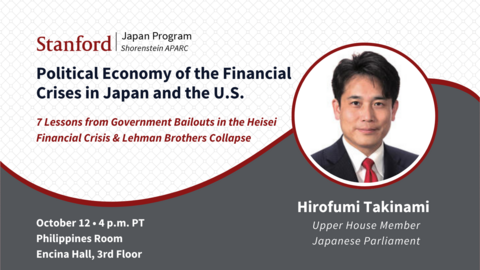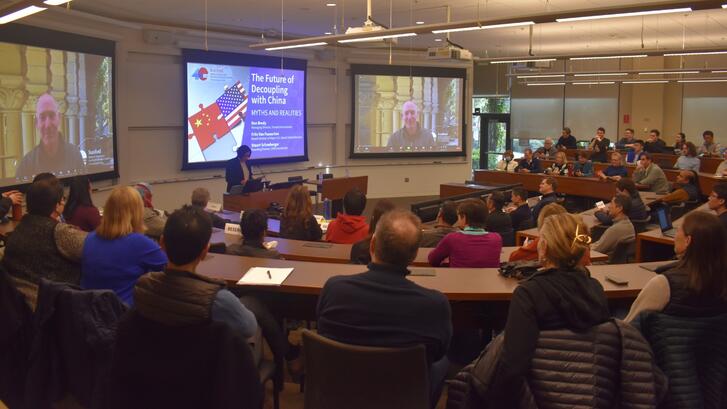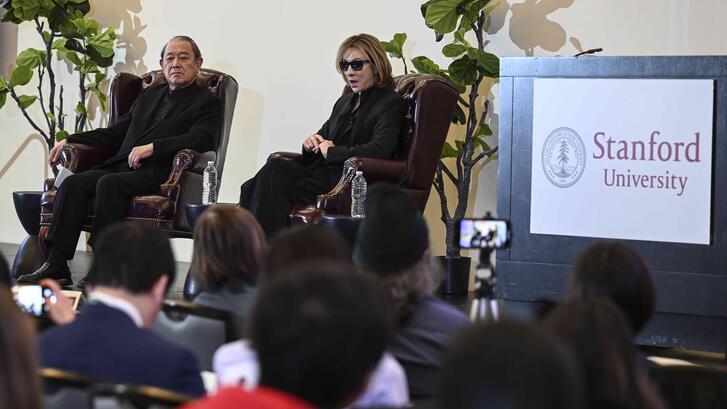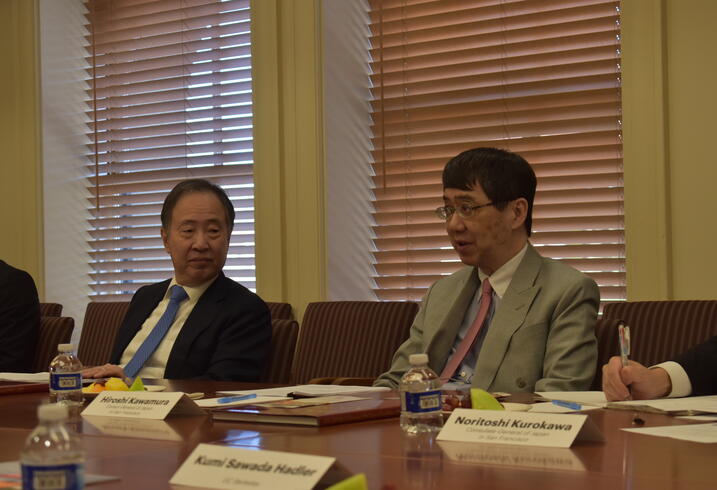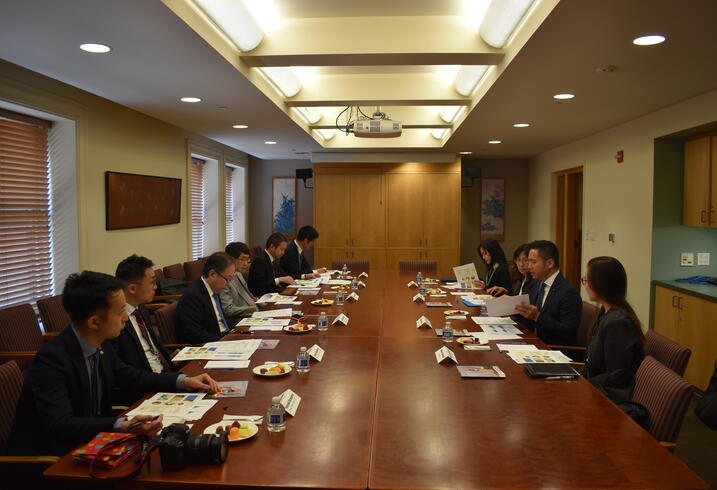Developments in China and Japan-China-U.S. Relations

How stable is politics in today's China? Many observers inside and outside the country were stunned by the sudden dismissal in December of Miao Hua, the head of the powerful political work department of the PLA and a member of the Central Military Commission. Takahara will discuss the state of Chinese politics and look into what we can expect of China's response to the 2nd Trump Administration.
This webinar event is co-hosted by the Walter H. Shorenstein Asia-Pacific Research Center Japan Program and the Consulate General of Japan in San Francisco
Speaker:

Akio Takahara is Distinguished Visiting Professor at the Tokyo Woman’s Christian University and former Professor of Contemporary Chinese Politics at the Graduate School of Law and Politics at The University of Tokyo. From April to July 2024, he is also serving as Senior Fellow of the Mercator Institute for China Studies (MERICS). He received his DPhil in 1988 from Sussex University, and later spent several years as Visiting Scholar at the Consulate-General of Japan in Hong Kong, the Japanese Embassy in Beijing, Harvard University, Peking University, the Mercator Institute for China Studies, and the Australian National University. Before joining The University of Tokyo, he taught at J. F. Oberlin University and Rikkyo University. He served as President of the Japan Association for Asian Studies, and as Secretary General of the New Japan-China Friendship 21st Century Committee. Akio was Dean of the Graduate School of Public Policy at The University of Tokyo from 2018 to 2020, and Director of the Japan International Cooperation Agency (JICA) Ogata Sadako Research Institute for Peace and Development from 2020 to 2023. He currently serves as Senior Adjunct Fellow of the Japan Institute of International Affairs, Distinguished Research Fellow of the Japan Forum on International Relations, Senior Research Adviser of the Japan International Cooperation Agency (JICA) Ogata Sadako Research Institute for Peace and Development, and Trustee of the Sasakawa Peace Foundation. His publications in English include The Politics of Wage Policy in Post-Revolutionary China, (Macmillan, 1992), Japan-China Relations in the Modern Era, (co-authored, Routledge, 2017), and “How do smaller countries in the Indo-Pacific region proactively interact with China? An introduction”, Journal of Contemporary East Asia Studies, DOI: 10.1080/24761028.2024.2309439, 26 January 2024.
Discussant:

Thomas Fingar is a Shorenstein APARC Fellow in the Freeman Spogli Institute for International Studies at Stanford University. He was the inaugural Oksenberg-Rohlen Distinguished Fellow from 2010 through 2015 and the Payne Distinguished Lecturer at Stanford in 2009.
From 2005 through 2008, he served as the first deputy director of national intelligence for analysis and, concurrently, as chairman of the National Intelligence Council. Fingar served previously as assistant secretary of the State Department’s Bureau of Intelligence and Research (2000-01 and 2004-05), principal deputy assistant secretary (2001-03), deputy assistant secretary for analysis (1994-2000), director of the Office of Analysis for East Asia and the Pacific (1989-94), and chief of the China Division (1986-89). Between 1975 and 1986 he held a number of positions at Stanford University, including senior research associate in the Center for International Security and Arms Control.
Moderator:

Kiyoteru Tsutsui is the Henri H. and Tomoye Takahashi Professor and Senior Fellow in Japanese Studies at Shorenstein APARC, the Director of the Japan Program and Deputy Director at APARC, a senior fellow of the Freeman Spogli Institute for International Studies, and Professor of Sociology, all at Stanford University. Tsutsui received his bachelor’s and master’s degrees from Kyoto University and earned an additional master’s degree and Ph.D. from Stanford’s sociology department in 2002. Tsutsui’s research interests lie in political/comparative sociology, social movements, globalization, human rights, and Japanese society. His most recent publication, Human Rights and the State: The Power of Ideas and the Realities of International Politics (Iwanami Shinsho, 2022), was awarded the 2022 Ishibashi Tanzan Award and the 44th Suntory Prize for Arts and Sciences.
Online via Zoom Webinar
Thomas Fingar
Freeman Spogli Institute for International Studies
Stanford University
Encina Hall, C-327
Stanford, CA 94305-6055
Thomas Fingar is a Shorenstein APARC Fellow in the Freeman Spogli Institute for International Studies at Stanford University. He was the inaugural Oksenberg-Rohlen Distinguished Fellow from 2010 through 2015 and the Payne Distinguished Lecturer at Stanford in 2009.
From 2005 through 2008, he served as the first deputy director of national intelligence for analysis and, concurrently, as chairman of the National Intelligence Council. Fingar served previously as assistant secretary of the State Department’s Bureau of Intelligence and Research (2000-01 and 2004-05), principal deputy assistant secretary (2001-03), deputy assistant secretary for analysis (1994-2000), director of the Office of Analysis for East Asia and the Pacific (1989-94), and chief of the China Division (1986-89). Between 1975 and 1986 he held a number of positions at Stanford University, including senior research associate in the Center for International Security and Arms Control.
Fingar is a graduate of Cornell University (A.B. in Government and History, 1968), and Stanford University (M.A., 1969 and Ph.D., 1977 both in political science). His most recent books are From Mandate to Blueprint: Lessons from Intelligence Reform (Stanford University Press, 2021), Reducing Uncertainty: Intelligence Analysis and National Security (Stanford University Press, 2011), The New Great Game: China and South and Central Asia in the Era of Reform, editor (Stanford University Press, 2016), Uneasy Partnerships: China and Japan, the Koreas, and Russia in the Era of Reform (Stanford, 2017), and Fateful Decisions: Choices that will Shape China’s Future, co-edited with Jean Oi (Stanford, 2020). His most recent article is, "The Role of Intelligence in Countering Illicit Nuclear-Related Procurement,” in Matthew Bunn, Martin B. Malin, William C. Potter, and Leonard S Spector, eds., Preventing Black Market Trade in Nuclear Technology (Cambridge, 2018)."


